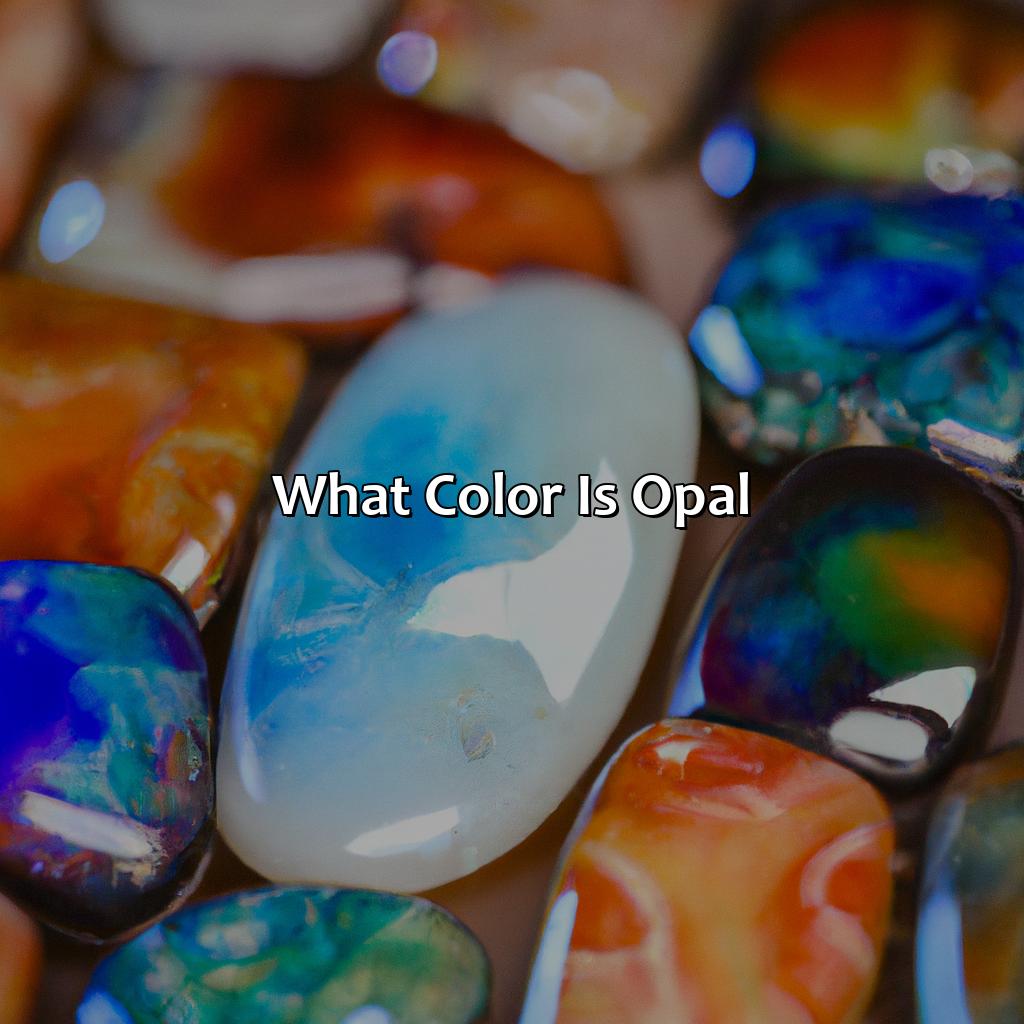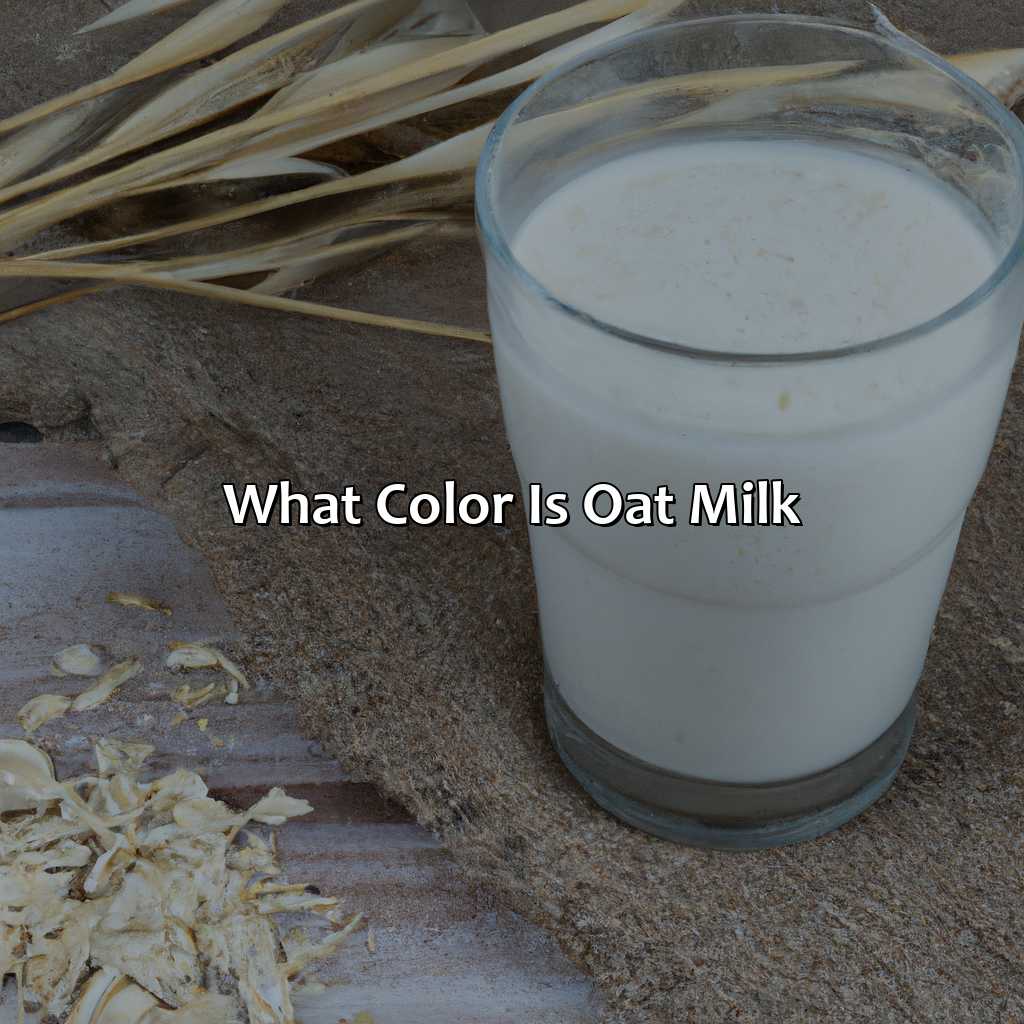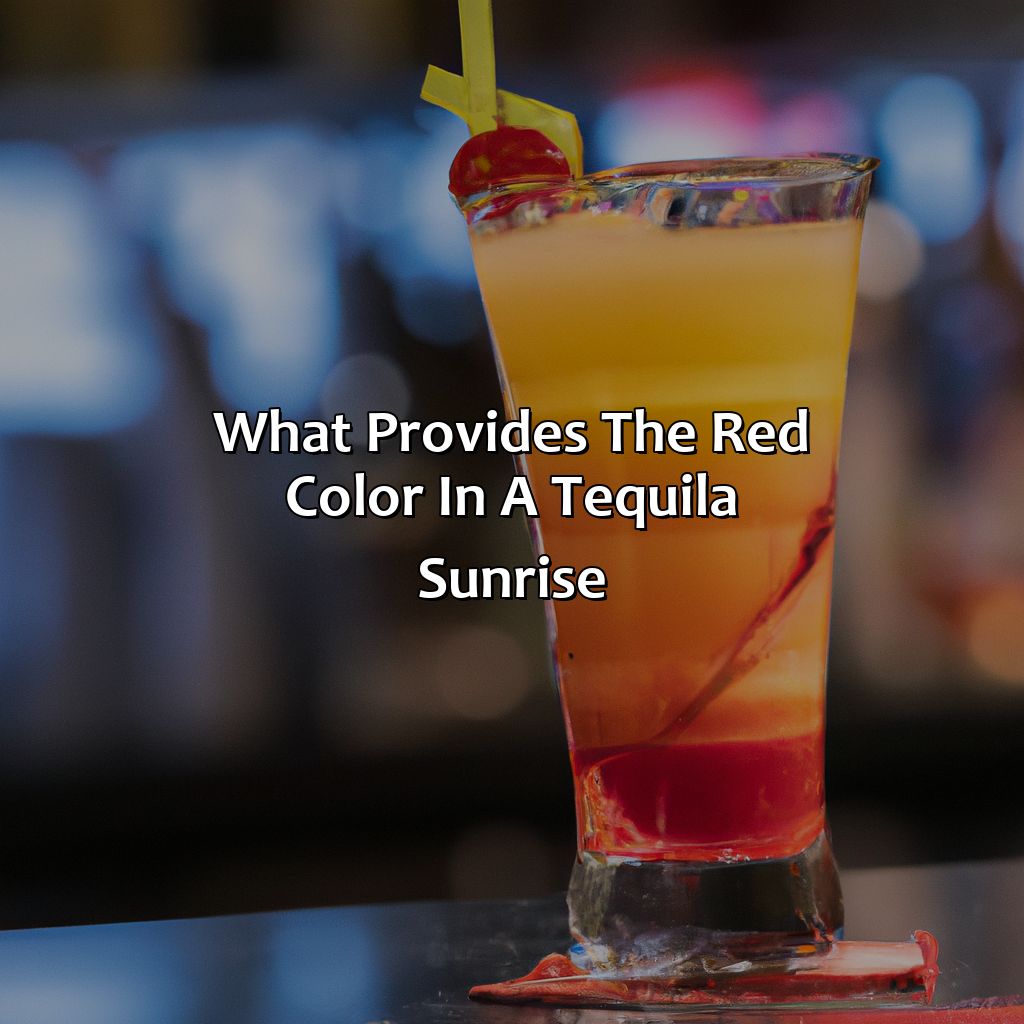Key Takeaway:
- Opal is a unique and exotic gemstone that comes in a variety of colors, including white, black, blue, green, pink, orange, yellow, red, and purple.
- Opal color is influenced by factors such as the mineral composition of the stone, the conditions under which it was formed, and the type of mining and processing used.
- Some popular opal colors include black opal, which is considered the most valuable and is often used in high-end jewelry, and fire opal, which is known for its bright orange or red hue and is believed to have healing and emotional balancing properties.
What is opal?
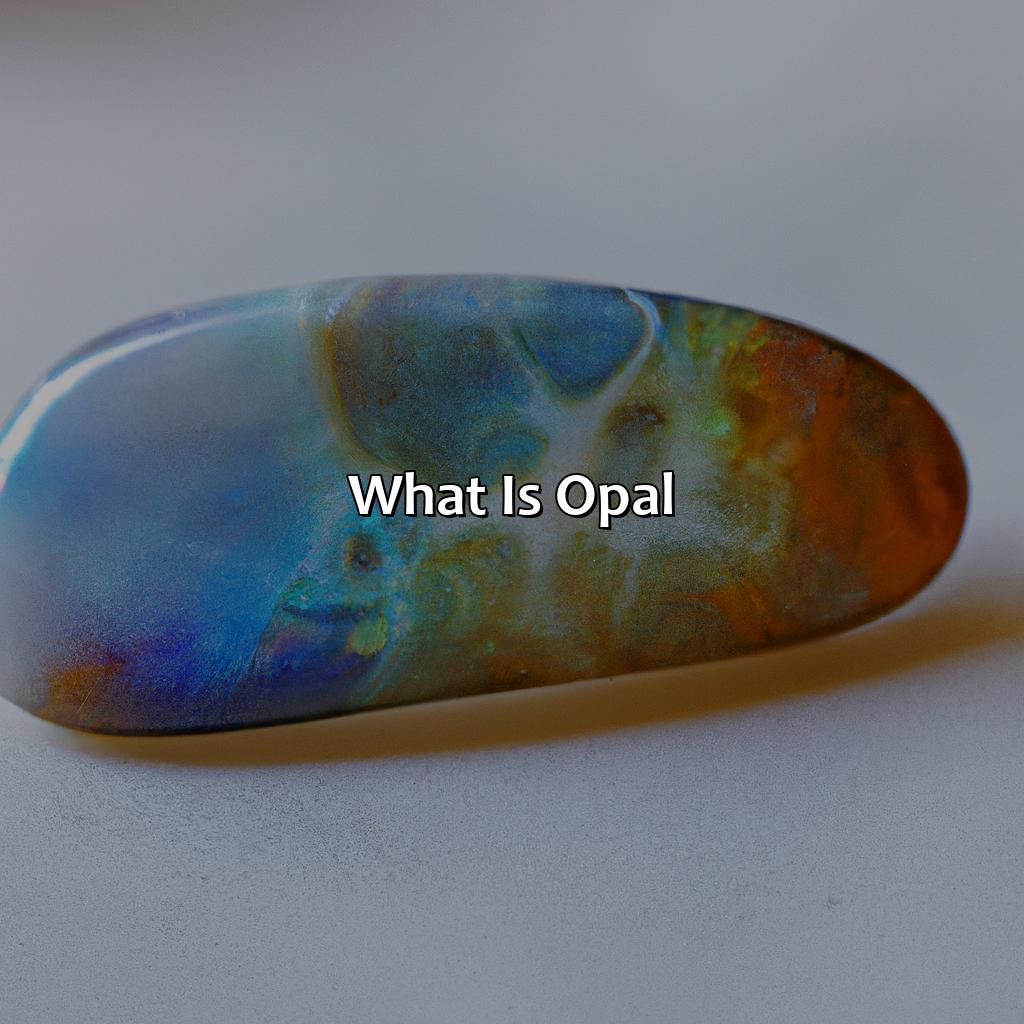
Photo Credits: colorscombo.com by Kyle Lewis
Opal is a fascinating precious gemstone with a unique composition that sets it apart from other gemstones. This natural stone is predominantly composed of silica and has a unique amorphous structure that diffracts light resulting in a play of color. Opals are considered semi-precious stones and are the birthstone for the month of October. They are found in various locations across the globe, such as in Australia, Mexico, Ethiopia, and Nevada, with each location having its own unique variety. The Lightning Ridge Opal and the Welo Opal are two of the most exotic and prized opals due to their unique fire patterns. In summary, Opal is a natural stone with a unique composition that sets it apart from other gemstones and comes in a variety of exotic and unique forms found across the globe.
Physical properties of opal
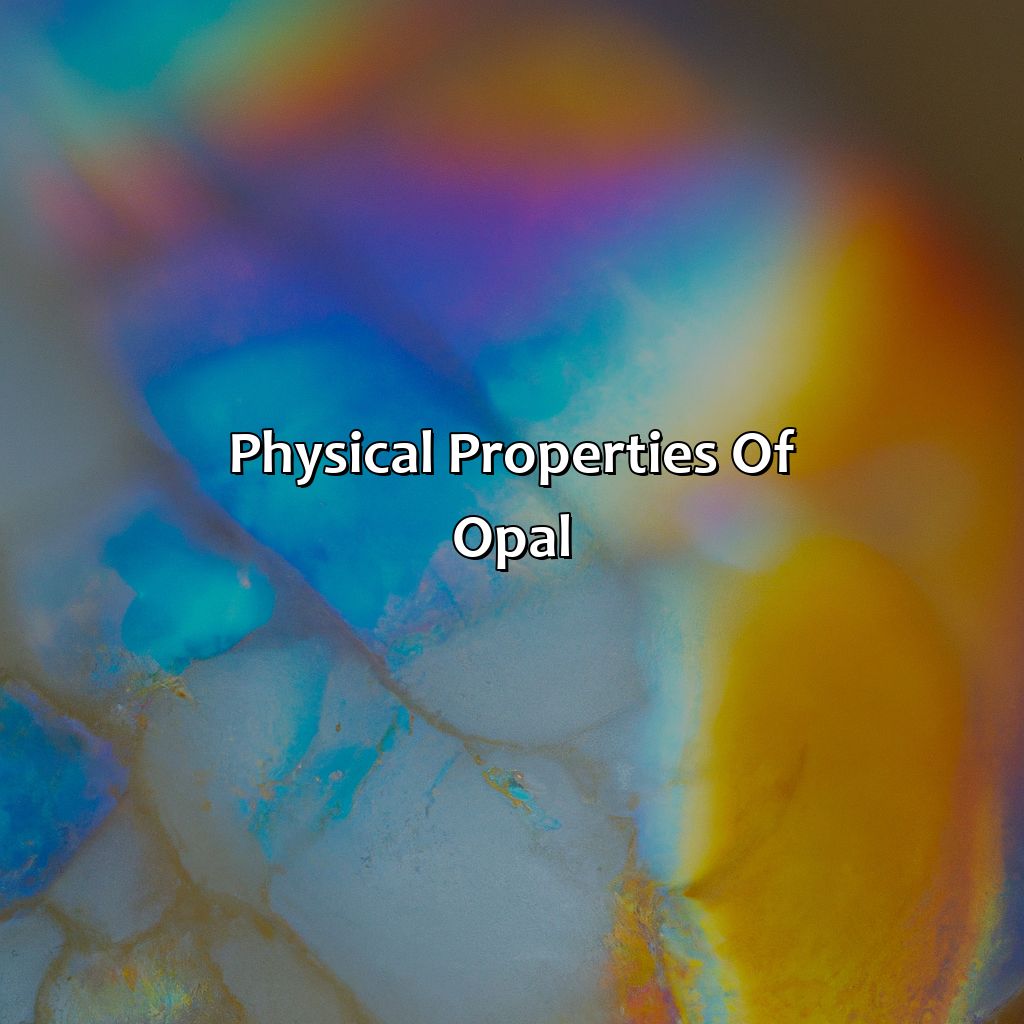
Photo Credits: colorscombo.com by Stephen Walker
To get to know opal better, explore its physical properties and vast color range. Let’s look at the hues it comes in: white, black, green, blue, pink, orange, yellow, red, purple, fire, milky opal, and more. Additionally, let’s identify what influences the colors. It could be the opal mining industry, where the opal is found, or even how it forms.
Color range of opal
Opal Color Range: Opals are known for their breathtaking play of color. They provide a unique hue and vibrancy that other gems cannot offer. Have a look at the opal colors that exist on the spectrum.
Opal colors range from white, black, blue, green, pink, orange, yellow, red to purple. One can find several variations in between these primary hues. The striking ranges of opal colors come from its play of color phenomenon or internal diffraction of light that creates an iridescent gemstone which plays with incredible colors.
Colors may also vary depending on the mineral content of the opal as well as transparency and specific gravity. It is uncommon to come across fire-opals with burnt oranges and bright yellows or milky-opals with a white translucent feel. Some even produce an interesting holographic effect, creating a mesmerizing optical illusion when viewed from different angles.
In general, precious opals exhibit more vibrant and diverse play of color than common opals. For example, black opals are considered rarest and have high value because they have a darker body color that enhances their play-of-color phenomenon much better than white opals.
Fun Fact: The largest ever Black Opal weighted 5555 carats was found near Lightning Ridge in New South Wales in 1946!
Opal’s color is influenced by factors as unpredictable as my ex’s mood swings, from the color spectrum to the volatile opal mining industry and the way opals are formed.
Factors influencing opal color
Opal color is influenced by various factors. The presence of various chemicals in the stone, such as iron and manganese oxides, can create different gemstone colors due to light diffraction. Other factors that influence opal colors include the angle of observation, the quality of light entering the stone, and the structure of internal voids in the stone.
| Factor | Description |
|---|---|
| Chemical Composition | The presence of different minerals and elements in opal affects its color. |
| Angle of Observation | The angle from which one views an opal determines the colors seen. At different angles, the color changes intensity or appears to disappear. |
| Quality Of Light Entering Stone | The quality of light entering an opal affects how much light is dispersed within it. Therefore, it influences how bright and vivid or subdued and mellow a color may appear. |
| Internal Voids Structure | The size and arrangement of internal voids also affect colors visible inside an opal. |
In addition to these factors are other external ones influencing exposure to harsh weather conditions during processing, handling during transit affects their composition, leading to color change risk post-production. Consequently, storing them away from excessive heat or cold ensures they protect their stunning patterns.
The opal mining industry plays a vital role in determining when deposits could offer new varieties based on their opal formation time thousands of feet beneath Earth’s surface. Caring for them because they are delicate makes sure they last long while maintaining their value.
An interesting story is about the Australian Lightning Ridge opal field, where highly prized black opals are produced. Lightning struck a tree and set adjacent rocks on fire, resulting in a subsequent discovery of “fire opals”; thus named due to the fiery color play displayed in them.
Whether you prefer the common or precious kind, opal is bound to rock your world.
Types of opal

Photo Credits: colorscombo.com by Joseph Torres
There are various variations of opal, each with its unique properties and color spectrum. Opals can be broadly classified as common opal and precious opal.
To understand further, we can look at the following table outlining the Types of Opal.
| Type of Opal | Color | Characteristics |
|---|---|---|
| Black Opal | Dark body tone with vivid colors | Most valuable and popular variety |
| White Opal | White or light-colored body tone with pastel colors | Affordable and commonly found variety |
| Crystal Opal | Transparent to translucent body tone with sharp colors | Expensive and rarest of all opals |
| Boulder Opal | Ironstone matrix with opal veins | Strong and durable variety |
| Matrix Opal | Opal mixed with the rock | Color distribution is irregular |
| Fire Opal | Orange or red body tone | Found in Mexico, rare and valuable |
It is worth mentioning that opals can also be named based on their origin, like Australian Opal, Ethiopian Opal, and Mexican Opal.
Moreover, it is fascinating to note that due to the complex formation process of opals, no two opals are the same, making them a rare gemstone.
Incorporating opal in jewelry is a great way to add unique and magnificent pieces to the collection. However, care should be taken while wearing and storing opal jewelry due to its sensitivity to water and heat. Regular cleaning and maintenance can help preserve its beauty for longer.
Opal mining and processing
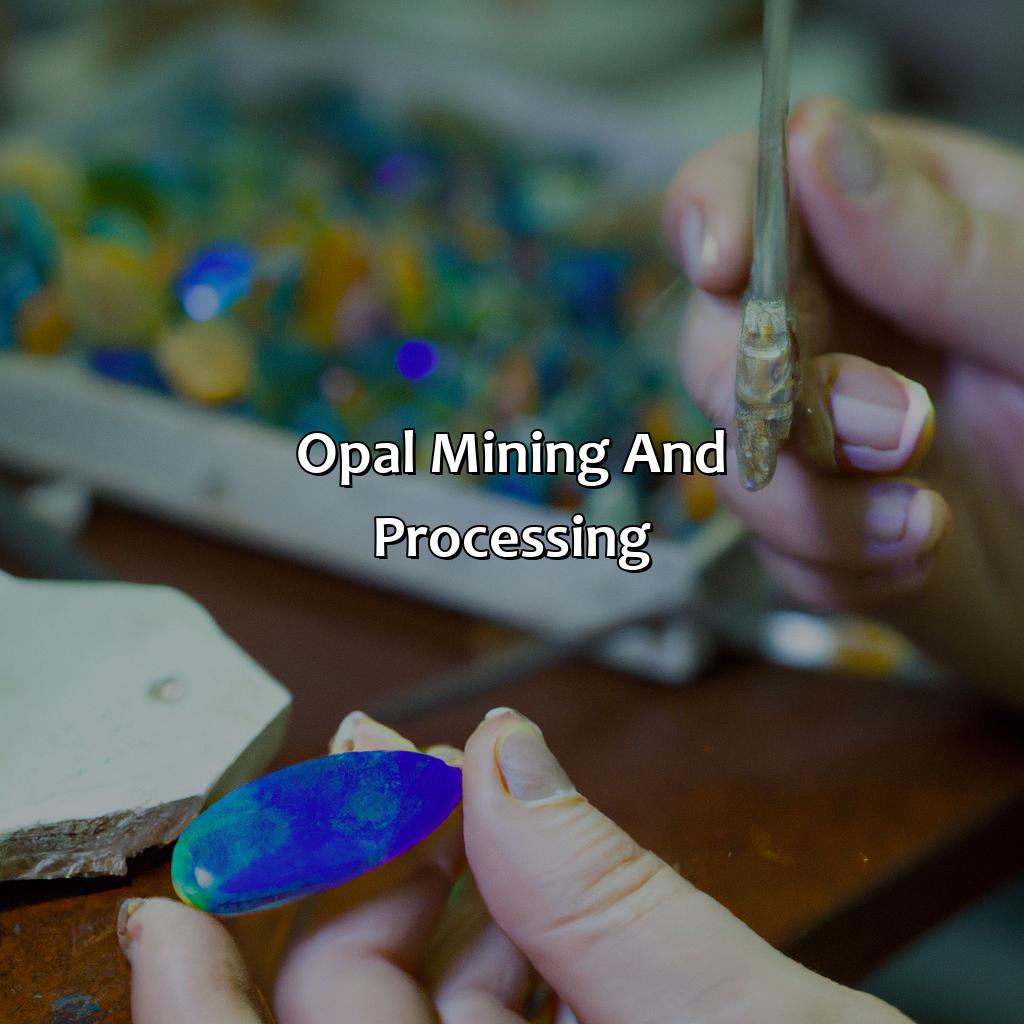
Photo Credits: colorscombo.com by Randy Brown
Opals are one of the most desirable gemstones in the world. The opal mining industry is crucial for meeting the worldwide demand for the gem. To satisfy this demand, miners must excavate tonnes of rock to extract the precious opal deposits hidden inside. Opals are formed under unique geological conditions, and the mining process is complex. The opal deposits are processed into rough opals, which are later transformed into beautiful gemstones.
The table below shows the steps involved in opal mining and processing:
| Step | Description |
|---|---|
| 1 | Exploration to locate potential opal deposits |
| 2 | Site preparation including removing vegetation and building access roads |
| 3 | Drilling and blasting to remove the overburden and access the opal deposits |
| 4 | Extraction of the opal deposits from the mine |
| 5 | Sorting and grading the rough opals |
| 6 | Cutting and polishing the opals into gemstones |
| 7 | Marketing and selling the gemstones to retailers and customers |
Opals are incredibly unique as they are formed in sedimentary rock where the conditions are just right. The opals can only be created from a mix of silica and water, and it takes millions of years for the process to occur naturally. This uniqueness adds to the allure of opals, making them more valuable and desirable.
Don’t miss out on the opportunity to own a one-of-a-kind opal gemstone. Visit a reputable jeweler specializing in opals to experience the beauty firsthand.
Popular opal colors and their meanings
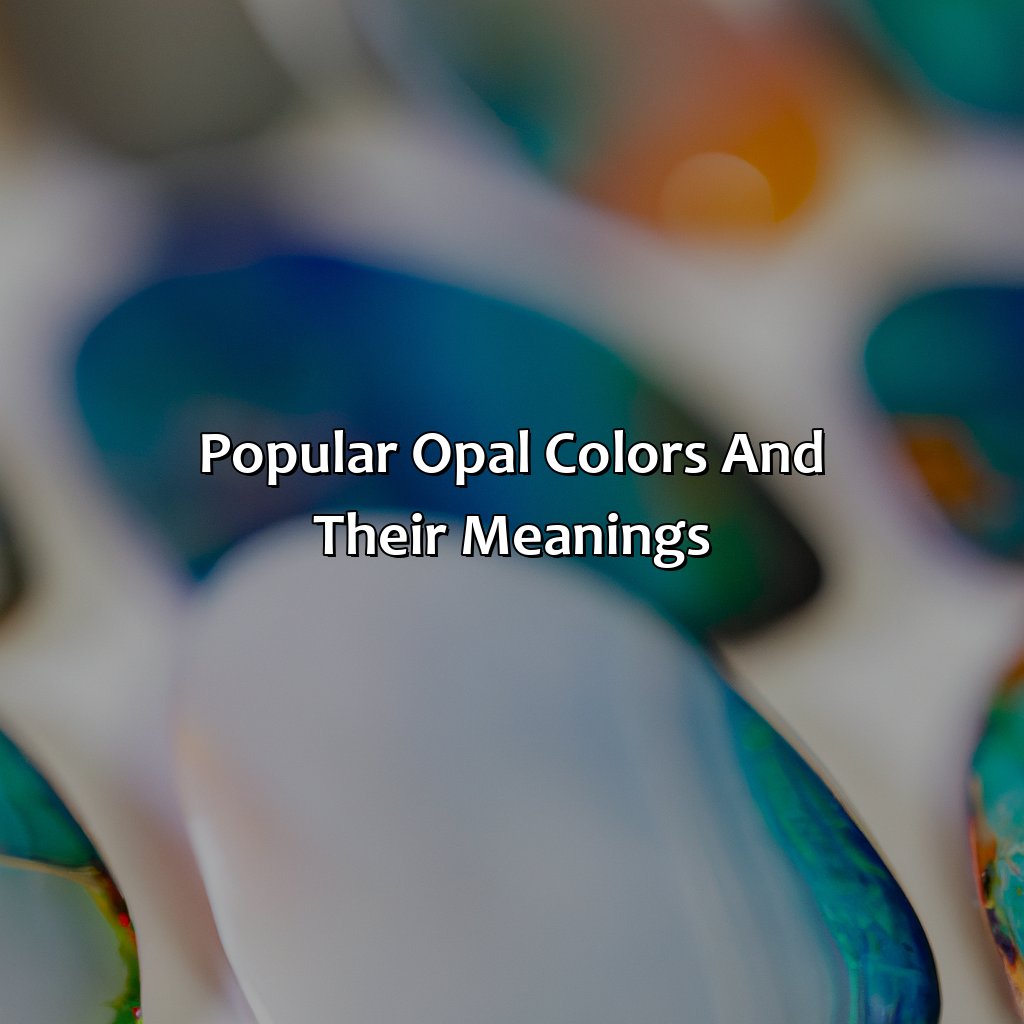
Photo Credits: colorscombo.com by Samuel Torres
Opal is a fascinating gemstone known for its unique play of colors. Different types of opal come in various colors and each color holds significant symbolism and metaphysical properties. Here’s a look at some popular opal colors and their meanings:
- Black Opal: Black opals are among the rarest and most appreciated opals. They are characterized by a dark body tone with vibrant flashes of colors, making them desirable for their rarity and beauty. Black opals symbolize emotional balance, courage, and loyalty. They are considered a chakra stone that helps align all seven chakras.
- White Opal: White opals are commonly found and inexpensive, making them popular among buyers. They have a white or grayish body tone with flashes of different colors. White opals are associated with purity, innocence, and hope. They are considered a healing stone and a chakra stone for the crown chakra.
- Fire Opal: Fire opals are known for their fiery red, orange, and yellow flashes that resemble a flame. They symbolize passion, energy, and creativity. Fire opals are considered a spiritual stone that helps to stimulate sexual energy and boost confidence. They are a chakra stone for the sacral chakra.
- Boulder Opal: Boulder opals are found embedded in ironstone rock and are characterized by a dark body tone with flashes of vibrant colors. They symbolize strength, grounding, and perseverance. They are considered a chakra stone for the root chakra and are believed to help improve physical stamina and mental clarity.
Opal metaphysical properties vary depending on the color and type, though generally, opals promote emotional balance, inner peace, and inspiration. Opals are also believed to have healing properties as they help with emotional trauma, improve eyesight, and boost the immune system.
As for the history of opal colors, the first recorded discovery of opals was in 4,000 BC in Ethiopia. Opals were believed to carry magical properties and were used for healing and spiritual rituals. In the Middle Ages, opals were considered a symbol of purity and hope and were believed to bring good luck to the wearer. Today, opals continue to be admired for their beauty and mystique.
Caring for opal
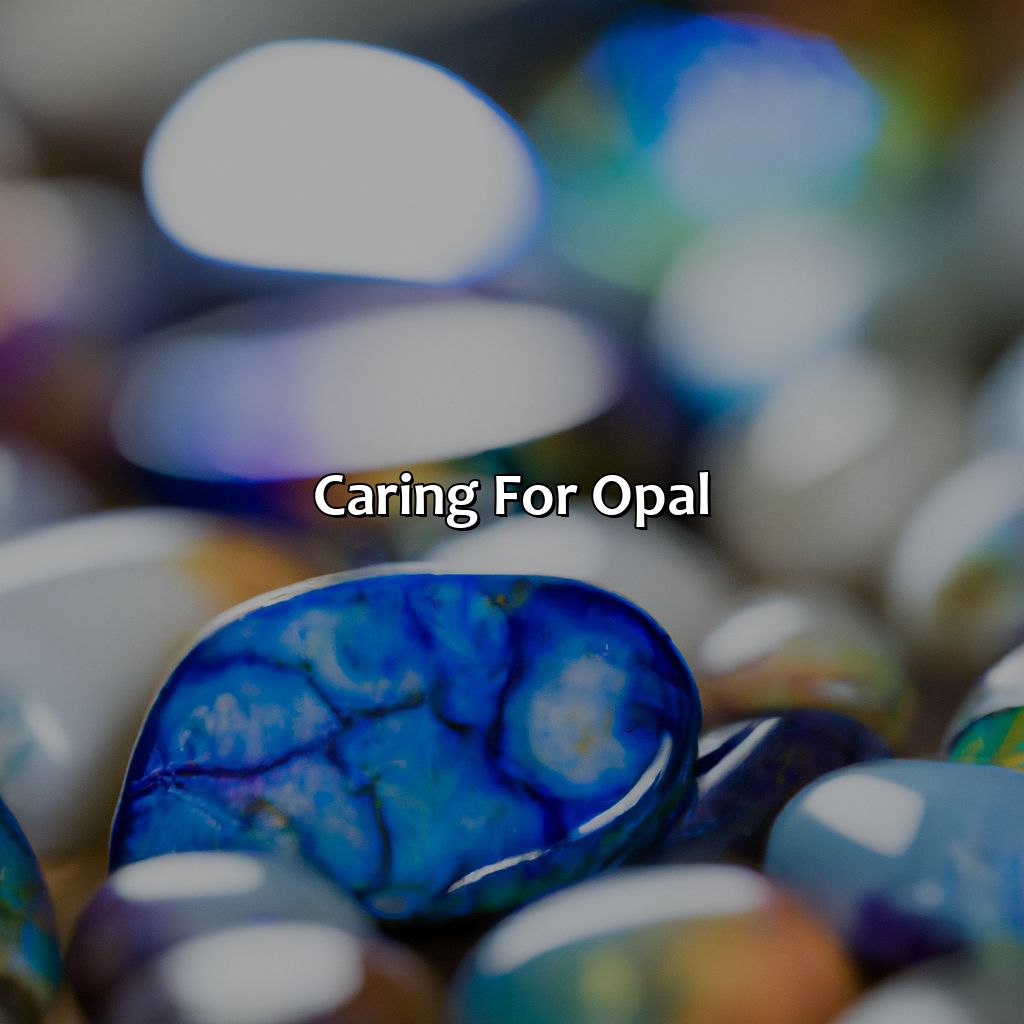
Photo Credits: colorscombo.com by Harold Taylor
Opal Care: The Professional Way
Taking care of opal is essential to maintain its magnificence. Proper opal care involves cleaning and storage. To clean your opal, it is best to use a soft cloth and mild detergent. Rinse the opal thoroughly, but avoid soaking it in water. To store opal, keep it in a soft pouch or padded container to protect it from scratches and damage.
Opal care is not limited to cleaning and storage; it includes handling the gemstone with care. It is advisable to avoid exposing the opal to extreme temperatures, harsh chemicals, or sunlight. Keeping the opal away from direct sunlight and heat sources prevents drying and cracking of the gemstone.
Once, a customer brought in an opal ring that had lost its luster due to exposure to harsh chemicals. The customer learned the hard way that proper opal care is essential to maintain the opal’s beauty. To restore the opal’s shine, we had to re-polish it, which cost the customer a considerable amount of money.
Some Facts About What Color Is Opal:
- ✅ Opal can come in a wide range of colors, from white and gray to red, orange, and green. (Source: American Gem Society)
- ✅ The most valuable opals have a play-of-color, where the colors appear to change and move depending on the angle and light source. (Source: Geology.com)
- ✅ Opal’s color is determined by the size and arrangement of the silica spheres within the stone. (Source: Gem Society)
- ✅ Opals can also be classified as black, white, or crystal, depending on their body color. (Source: International Gem Society)
- ✅ Australian opals are among the most famous and highly prized in the world. (Source: Gemological Institute of America)
FAQs about What Color Is Opal
What color is opal?
Opal is a gemstone that can come in a variety of colors. They can be white, black, blue, pink, green, yellow, or even colorless. Opals often have a unique play of color that reflects different hues depending on the angle of light that hits them.
Are all opals multicolored?
No, not all opals are multicolored. While many opals have a play of color that allows them to display different hues, some opals are solid in color. Solid opals can be white, black, or any other color.
Can opals change color?
Opals can appear to change color depending on the angle of light that hits them. This optical phenomenon is known as the play of color and is a key characteristic of opals. The different colors you see in an opal are not due to changes in the stone itself but rather to changes in the angle of light reflecting off the surface.
What is the most common color of opal?
White opal is the most common color of opal. These opals are typically found in Australia and are generally less expensive than other types of opals. White opals tend to have a light body color with flashes of color throughout the stone.
What are black opals?
Black opals are a type of opal that features a dark body color with flashes of color throughout the stone. These opals are some of the rarest and most valuable opals in the world. They are primarily found in Australia and are highly sought after by collectors and jewelry makers.
Do opal colors have meaning?
Some people believe that opal colors have meaning, but there is no scientific evidence to support this. Different cultures and traditions may ascribe different meanings to opal colors, but these are often subjective and not based on any factual basis.
